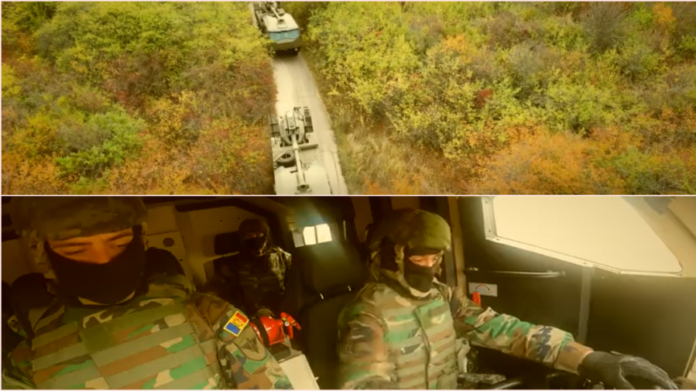The Republic of Moldova operates Israeli ATMOS 2000 155 mm howitzers mounted on trucks, signaling that Chisinau has switched from Soviet to NATO systems. The Ministry of Defense published images of live-fire exercises with the truck-mounted ATMOS 2000 howitzers, recently delivered from Israel, confirming that the 155 mm self-propelled system now serves in the national army.
Minister of Defense Anatolie Nosatîi and Chief of the General Staff Brigadier General Vitalie Micov observed National Army soldiers conducting training on the new self-propelled artillery systems.
“We appreciated the results achieved and the enthusiasm of the military during the exercise. We will continue the modernization process with the same determination to equip our military personnel to current standards and maintain an army ready to fulfill its constitutional missions,” said Defense Minister Anatolie Nosatii.
According to Army Recognition, the weapons replace a fleet of almost entirely towed Soviet-era artillery and arrive at a time when the European Union channels increased security assistance to Chisinau through the European Peace Facility and related instruments, while Russia’s war in neighboring Ukraine continues to generate political, economic, and military pressure on Moldova.
The cost of an ATMOS 2000 varies significantly depending on the contract, with examples including the Philippines’ purchase of 12 units for $47.2 million (approximately $3.9 million per unit) and Colombia’s order of 18 howitzers for $101.7 million (approximately $5.65 million per unit).
Additional costs accompany the systems, including training, maintenance, and ammunition.
What is ATMOS 2000?
The ATMOS 2000 is a truck‑mounted self‑propelled artillery system designed by Soltam Systems and marketed by Elbit Systems. It uses a 6×6 or 8×8 chassis—often Tatra—and features an armored cabin that protects the crew from small‑caliber fire and fragmentation. Its 155 mm/52‑caliber gun is fully compatible with NATO common fire procedures and STANAG‑standard ammunition, supporting interoperability with Western systems.
The system typically carries 27–32 shells in onboard racks and fires 4–9 rounds per minute, depending on the propellant charge, barrel temperature, and mission requirements. According to Army Recognition, ATMOS 2000 achieves a range of about 30 km with standard high‑explosive projectiles and up to 41 km with base‑bleed or rocket‑assisted projectiles.
Stabilization jacks, a digital fire‑control system, and automatic gun‑laying mechanisms accelerate deployment and displacement, which reduces vulnerability to counter‑battery fire. For armed forces with limited personnel, ATMOS 2000 offers an efficient “shoot‑and‑scoot”
capability—preparing, firing, and relocating within short cycles, minimizing exposure to hostile UAVs and weapon‑locating radars.
The ATMOS 2000 system integrates an inertial navigation unit with GPS, enabling self-localization and reducing reliance on surveying teams. Electric drives for gun elevation and traverse speed up transitions between firing and road configurations. The truck chassis provides reliable mobility over Moldova’s varied terrain.
Key specifications include a weight of approximately 23 tons, a road speed of up to 80 km/h, and a range of nearly 1,000 km. The crew consists of 2–6 members, depending on automation and configuration options.
Security analysts note that the arrival of Israeli self-propelled artillery does not alter the regional balance but signals a clear modernization path. Moldova replaces Soviet-era equipment with Western-standard systems, enhancing interoperability with EU and NATO partners and raising the cost of coercive actions near its borders, including in the context of Transnistria.
Experts also emphasize, as discussed on RLIVE TV, that these exercises focus on technical training and familiarization with Western standards rather than offensive operations. The drills strengthen Moldova’s defensive capabilities while maintaining its neutral status.



